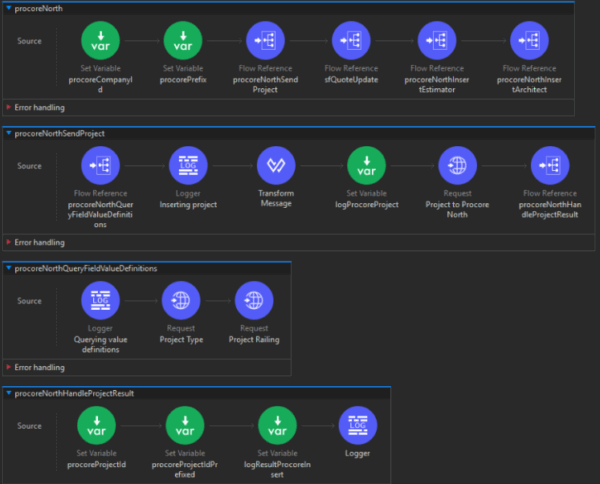From Close to Kickoff: How a Salesforce & Procore Integration Can Help Manufacturers Deliver Faster
Closing a deal doesn’t mean the work is done. For manufacturers supporting construction projects, that’s when the real effort begins. But if your sales system and project management platform don’t connect, you’re starting every job at a disadvantage.
Sales reps finalize the opportunity or quote in Salesforce. Project managers launch the job in Procore. But without a link between the two, those steps get messy—fast. Someone has to re-enter all the project info. Details get missed. Teams fall out of sync. And execution gets delayed before it even begins.
That’s exactly the kind of disconnect this integration solves. By linking Salesforce and Procore through MuleSoft, we created a direct path from quote to project creation—automated, accurate, and immediate.
The Gap: Manual Project Setup Slowing Down Execution
The biggest pain point was simple: nothing tied Salesforce quotes or opportunities to Procore projects. So every time a job was won, someone had to create the matching project in Procore by hand.
That included duplicating contact details, site info, specs, and more. It also meant the Procore Project ID—the reference point for everything moving forward—never made it back into Salesforce. Sales and project teams were working from different systems, with no easy way to reconcile what was what.
With this integration in place, that manual handoff disappears. Project creation in Procore is triggered directly from Salesforce, and the returned Procore ID is logged back into the originating quote.
Behind the Scenes: A Clean, Flexible Build
- Triggered by Salesforce: When a quote is marked as ready, the integration fires.
- Data flow: One-way. Salesforce sends the project data to Procore. Procore responds with a unique Project ID, which gets written back to Salesforce.
- Multi-instance logic: The client had two separate Procore environments—one for U.S. projects, one for Canada. We built logic to automatically route data to the correct instance based on project geography.
Procore didn’t offer a native MuleSoft connector, so we used HTTP requests to work directly with their public API. That required configuring authentication, handling error responses, and navigating different regional endpoint structures—but MuleSoft gave us the tools to manage all of it cleanly.
What Changed for the Team
No More Manual Project Setup
Once a project is ready in Salesforce, it’s created in the right Procore instance—no copying, no delays.
Full Visibility in Salesforce With the Procore Project ID saved back to the quote, sales and ops have a shared reference point. Everyone knows what’s happening and when.
With the Procore Project ID saved back to the quote, sales and ops have a shared reference point. Everyone knows what’s happening and when.
Self-Serve LogsEvery transaction is logged. Successes. Failures. Warnings. It’s all visible to Salesforce admins, so they don’t need a developer to troubleshoot small issues.
Delivering Work Faster, Without Changing the Process
The end result is a process that feels invisible, but saves time on every project. What used to take hours now happens in seconds. Teams stay aligned. Data stays consistent. And projects get off the ground without waiting on someone to copy-paste critical info.
That’s the power of connecting the tools your teams already use—so they can focus on what they’re here to do: deliver.






